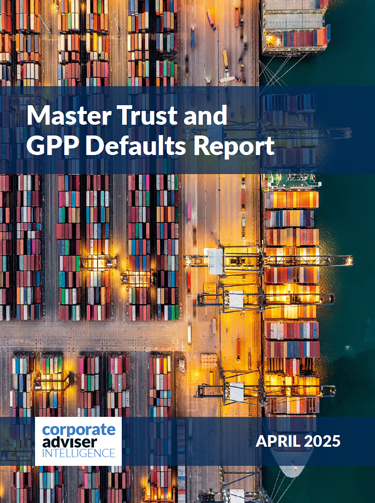The new Value for Money (VFM) assessments look set to significantly reshape the DC industry — but do these proposals go far enough?
This was one of the key issues under debate at a recent Corporate Adviser roundtable event, with consultants, trustees and providers on the panel saying government and policymakers could have been bolder when devising this framework.
They pointed out that VFM currently targets metrics across just three areas: charges, service and investment performance, yet there are many more factors that will influence whether a member ultimately has a good outcome in terms of their retirement prospects.
Some panellists pointed out that one glaring omission was decumulation, with these value for money metrics primarily focused on the growth phase and accumulation.
Although there is the option to include decumulation at a later stage, many would have liked this to have been included at the outset. Paul Waters, partner and head of DC markets at Hymans Robertson said: “The decumulation side is massive. It has a serious impact on pensions and outcomes, and it doesn’t feel that hard to include it.”
The delegates discussed the broad impact of the value for money initiative and, in particular, the FCA consultation.
“I would say that the decumulation part is significant enough and straightforward enough that it should have been included on day one,” Waters added.
Not all panellists agreed though. Some wanted more of an evolutionary process, bedding in the current proposals before other areas are potentially added.
Some felt that the long-term goal should certainly be to compare outcomes into retirement.
Partner and head of DC at Barnett Waddingham Mark Futcher said: “The workplace environment is actually set up to deal with all of this. All of the main providers have robust basic products, whole of market annuities services, drawdown.”
Tom Chalkley, senior DC consultant at Isio, said: “On decumulation, and the long-term future of comparing pension schemes and defining value, it feels remiss that it is not in there.
“That is where we are seeing product development under the surface and potentially entrants from the investment management space that is default ready. It feels like a gap not to mention it. Though including the metrics might be too difficult.”
It was suggested that regulators might stifle innovation at this stage in the market’s development by taking a too prescriptive approach to metrics.
‘Compare my pension’ model
Mercer’s master trust head of engagement Tom Higham wants to move to a situation where it is much easier to make comparisons between pensions.
“We are constantly asking ourselves whether we can go further than just looking at investment performance and charges. What can we do to start creating measurable consistent figures and targets across the industry?”
Providers needed to ask themselves how it would be possible to provide a better chance of maximising income in retirement.
“What you are trying to track 20, 30, 40 years of performance and service. We think the VFM framework is a good start, but we are questioning whether it can go further,” he said.
He says the goal is to show they have delivered VFM from day one of someone joining the scheme all the way to and through retirement.
This means looking at charges, investment performance, ‘the measures we have to’ and engagement metrics as well.
Mercer uses a sample set of 500,000 members from different providers to create a benchmark for engagement metrics and how Mercer adds value above and beyond that.
He said that large providers all tend to report differently on these measures so there needs to be an industry push to report consistently, almost like a compare-my-pension type model.
There was some discussion about comparing schemes with very different membership profiles.
Senior consultant at Mercer, Emma Roberts raised the issue of comparing very different schemes: “So, say comparing Mercer employers and Nest employers. I have clients who talk about low margin business and are convinced that their members don’t have access to a smart phone and can’t get them out of the factory. So, to compare one scheme to another, you have to look under the bonnet and assess delivering fairer value within schemes and among schemes.”
Paul Tinsley, professional trustee at Dalriada suggested that some things included by the FCA in the Value for Money paper were actually about value for member.
He said: “You have to be careful about the headings you are putting things under. If you are looking for value for money, value is product. That is not what goes on in the workplace. What goes on in the workplace is value for member. That’s the consumer journey. So, my confusion over the FCA’s consultation is that it is trying to squeeze other things under Value for Money incorrectly.”
He saw the broader challenge as building public trust in the system where it is lacking because of broader mistrust in financial services, but VFM was not simple enough to be understood by the public and therefore address this issue.
Are three metrics enough?
The VFM policy would generate a huge amount of data, but panellists were uncertain about the utility value of some of this information.
Ruari Grant, senior policy lead DC and Master trusts at the Pensions and Lifetime Savings Association, said: “I would lean toward the framework as proposed as it is more than comprehensive in terms of data disclosures.”
He noted that the asset allocation requirements will produce lots of data points. but are excluded from the value assessment unlike performance, costs and service.
“Somehow we have to come to a balance that is workable,” he added.
“Is it meaningful comparing someone with £500 with one provider or £200,000 with another. Engagement for the second person is more important but it doesn’t mean the other is doing a bad job. The same data point might not lead to a meaningful comparison.”
There was a discussion of Consumer Duty cutting across VFM, with Barnett Waddingham partner and head of DC Mark Futcher suggesting it could require providers to warn consumers about taking out too much money under the foreseeable harm provision. He wanted to see questions such as this all tidied up.
Tinsley suggested you might be interfering in decisions about which tax wrapper they wanted to keep their money in, adding that as a trustee he had to remember it was the people’s own money.
There was a sense that with reforms to the advice guidance barrier, better warnings might be allowed, although there was also a suggestion that the FCA might argue that providers already had a lot of scope but were currently risk averse, hence improvements likely under the boundary review. Others felt it remained very unclear.
VFM in a megafund world
The panel also debated how the consultation agenda, set out in the Chancellor’s recent Mansion House speech could impact the implementation of VFM.
Not all on the panel were convinced that this consolidation agenda would happen at pace, with capacity issues, potentially stalling mergers, as schemes bid to reach £25bn of AUM.
Despite government ambitions to have a £25bn minimum for auto-enrolled defaults by 2030, the process could run well into the 2030s, panellists said.
The experts also debated how a default scheme could be defined, with some providers well below the potential minimum being part of larger groups. In one case a smaller provider was part of a high street bank, another had multiple billions managed globally on a fiduciary basis though the UK asset base was smaller.
Panellists also pointed out that thousands of small schemes often use an underpinning investment fund or investment platform that has assets well above the minimum.
Grant said: “2030 is rather ambitious. Is it scheme level or at default fund level? That is quite important. Some providers could get away with not many changes if it was the latter. If they go down the former route, it means a lot more change and doing it by 2030 feels quite ambitious. Given capacity constraints in the market in terms of consolidation, and actually capacity at the regulator, giving the nod to mergers is taking ages.”
Tinsley added: “You don’t have to combine schemes to combine funds. If you take Schroders LTAF platform. If you have got 1,500 schemes invested on that platform, it is one fund.”
One question under debate was whether this would enable new entrants to enter the market. Futcher said that it was important to consider the underlying infrastructure that’s used, as an administration platform or investment platform. He said that is where you get the scale with very significant asset amounts.
He also asked what would happen to new entrants unless they could use the current infrastructure.
“Unless you are going to say you can’t have new entrants, you need a framework to allow them to enter the market to use the infrastructure in some way like [a Grand Prix team using] a Formula 1 engine maker.”
Switching process
There was also discussion about scheme switching. George Currie, senior consultant at LCP, said: “The government, particularly listening to the mood music around Mansion House, is interested in one round of churn to larger consolidated arrangements.
“It doesn’t have a clear eye on the next stage of churn and whether that is desirable. We have not seen much of a secondary master trust market develop, though there’s been a bit. And I don’t see the government interested in facilitating that [secondary market] in the interests of value for money.”
Trustee under scrutiny
There was also a long discussion about the mechanics and practicalities of switching and, in particular, the attitudes and practices of master trust trustees.
Futcher said: “Most master trust trustees don’t know what they need to do. If they
get a request to move a scheme away from a section of a master trust to another master trust. You are trying to get one professional commercial trustee board to agree that that one over there is a better value arrangement.”
Tinsley remarked that one board had demanded a six-figure sum to do a value for money assessment before a master trust to master trust transfer. The employer had to leave the money in the old scheme due to the cost breaking up the pension arrangement.
Futcher said the first thing his firm says to clients is that “before you go into a master trust make sure you know how you can get out”.
He added that an employer’s purchasing power is significantly diminished if they are not transferring assets into a new arrangement.
Chalkley added that his firm had pressed a provider to address their trust deed and rules as they had required both provider and master trust to agree to sign off.
He added that those consultants present obviously worked with employers and larger schemes who would pay for advice around scheme choice, switching, and whether they are fully utilising
current benefits.
He noted that a huge number of employers did not pay for advice. “The rules need to apply to them so they can move to a better arrangement. They are reliant on defaults and rely on regulators to bring standards up,” he added.
The panel agreed VFM is likely to have far reaching impact in the DC sector, and some regulatory framework to help assess value for members is likely to be.





